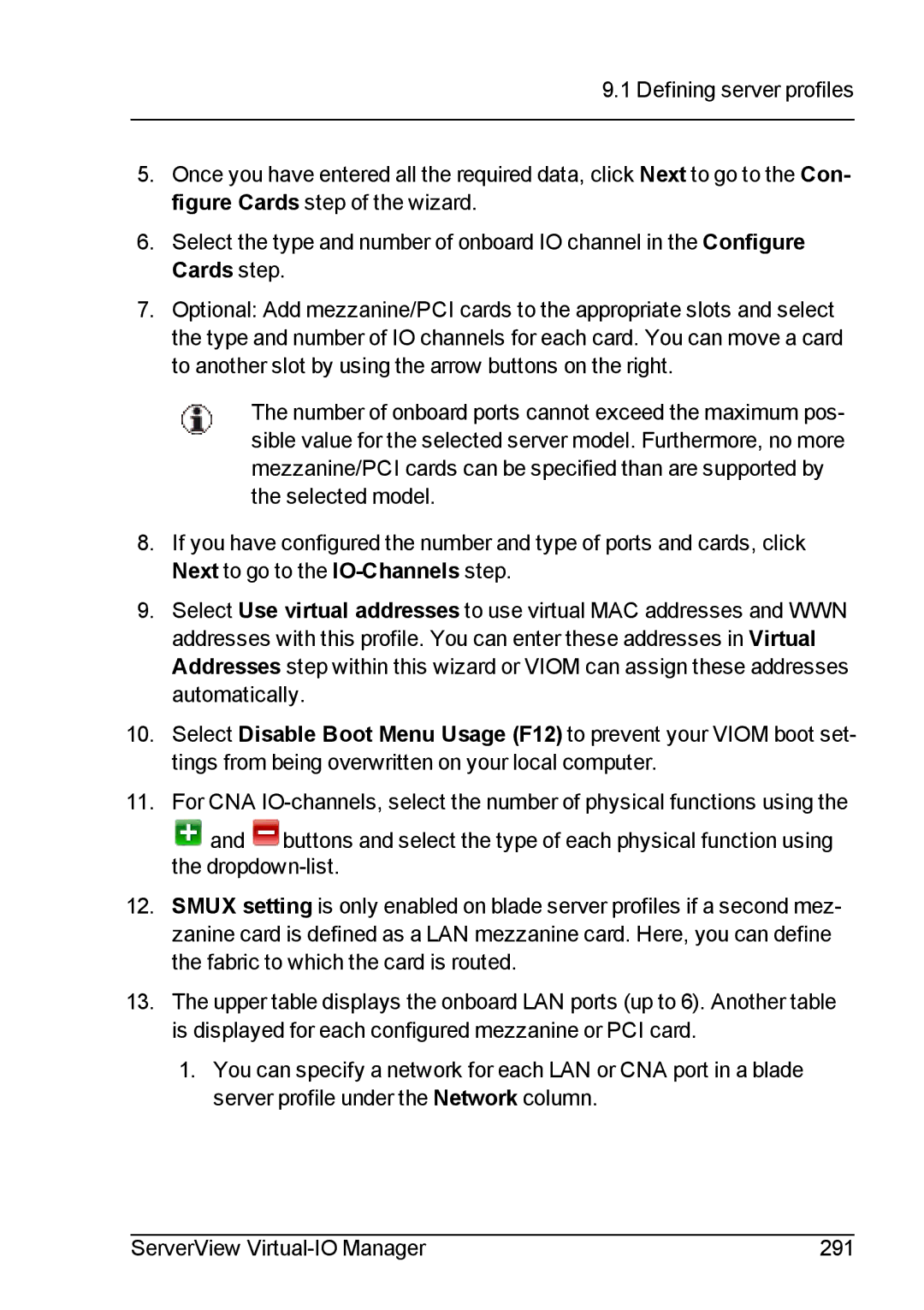
9.1 Defining server profiles
5.Once you have entered all the required data, click Next to go to the Con- figure Cards step of the wizard.
6.Select the type and number of onboard IO channel in the Configure Cards step.
7.Optional: Add mezzanine/PCI cards to the appropriate slots and select the type and number of IO channels for each card. You can move a card to another slot by using the arrow buttons on the right.
The number of onboard ports cannot exceed the maximum pos- sible value for the selected server model. Furthermore, no more mezzanine/PCI cards can be specified than are supported by the selected model.
8.If you have configured the number and type of ports and cards, click Next to go to the
9.Select Use virtual addresses to use virtual MAC addresses and WWN addresses with this profile. You can enter these addresses in Virtual Addresses step within this wizard or VIOM can assign these addresses automatically.
10.Select Disable Boot Menu Usage (F12) to prevent your VIOM boot set- tings from being overwritten on your local computer.
11.For CNA
![]() and
and ![]() buttons and select the type of each physical function using the
buttons and select the type of each physical function using the
12.SMUX setting is only enabled on blade server profiles if a second mez- zanine card is defined as a LAN mezzanine card. Here, you can define the fabric to which the card is routed.
13.The upper table displays the onboard LAN ports (up to 6). Another table is displayed for each configured mezzanine or PCI card.
1.You can specify a network for each LAN or CNA port in a blade server profile under the Network column.
ServerView | 291 |
